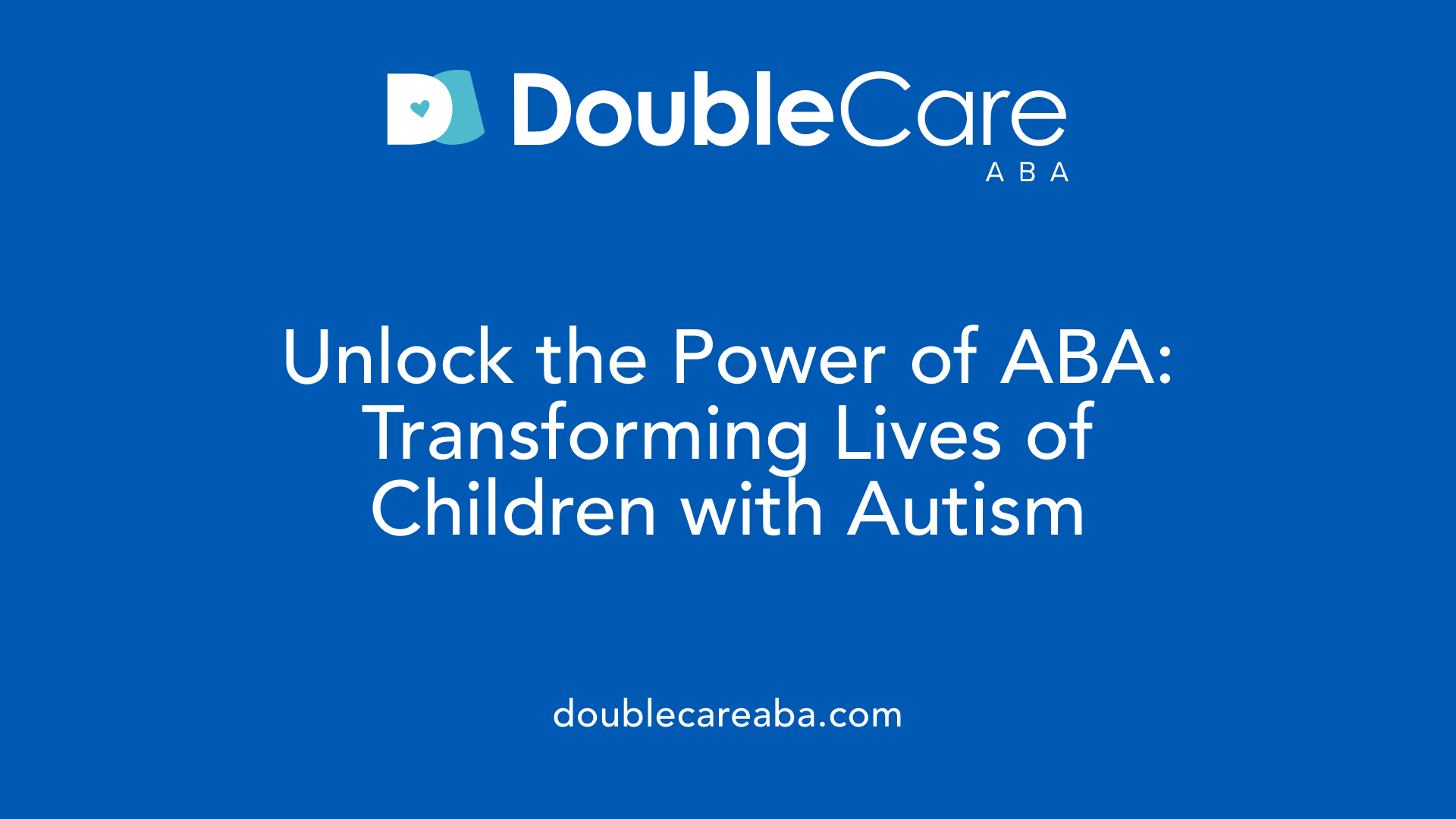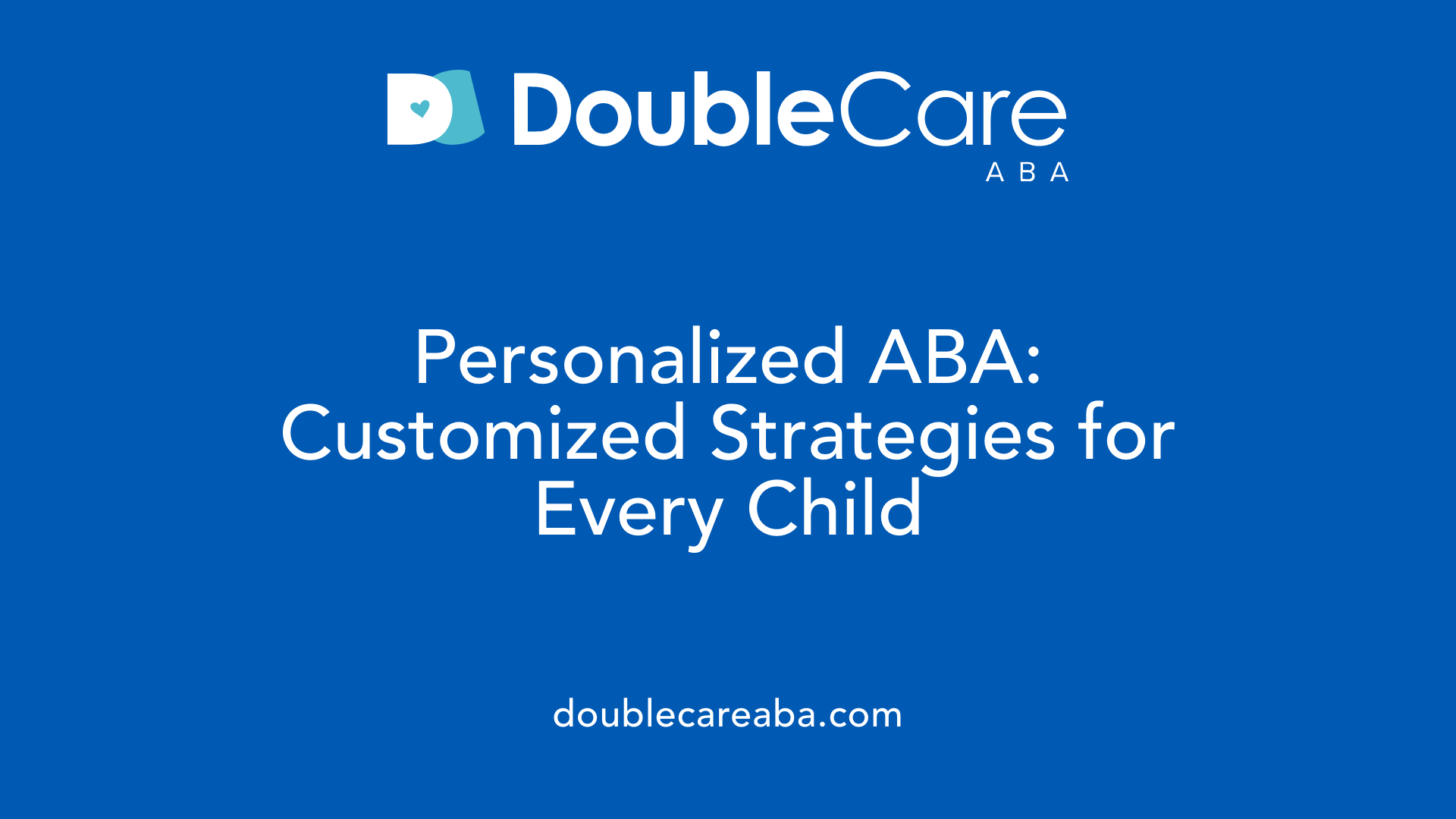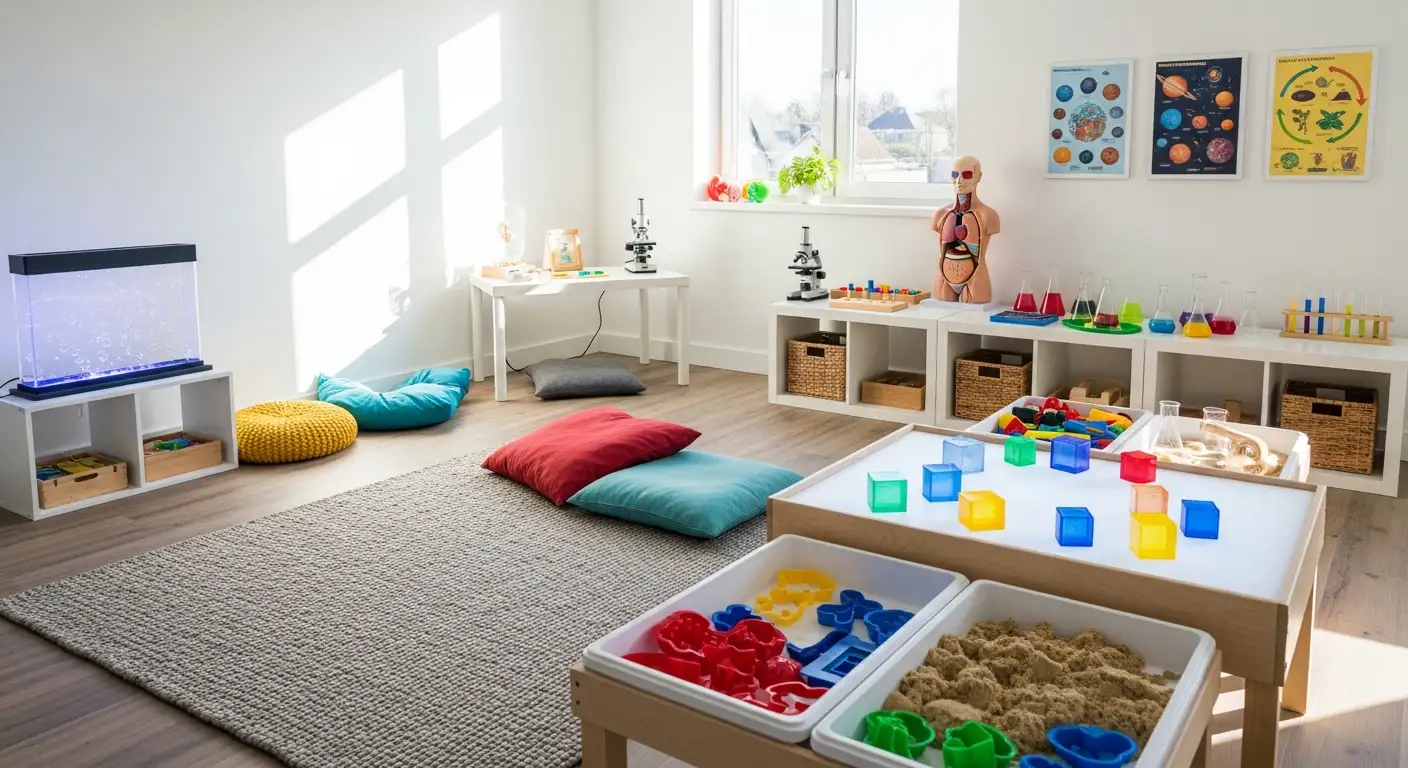How Parents Can Encourage Positive Social Behaviors at Home
Supporting Social Growth in Children with Autism: The Role of Parents and Therapy

The Importance of Parental Involvement in Fostering Social Skills
Children with autism spectrum disorder (ASD) face unique challenges in communication, social interaction, and behavior regulation. While evidence-based therapies like Applied Behavior Analysis (ABA) provide targeted interventions, the role of parents in encouraging positive social behaviors at home is vital. Integrating therapy techniques into everyday life at home not only reinforces skills learned in professional settings but also creates supportive environments for emotional growth, social development, and improved communication. This article explores how parents can effectively support their children’s social behaviors through understanding ABA therapy, play interventions, and practical home strategies.
Understanding Applied Behavior Analysis (ABA) Therapy and Its Benefits

What is Applied Behavior Analysis (ABA) therapy, and how does it help individuals with autism?
Applied Behavior Analysis (ABA) therapy is a scientifically supported intervention that focuses on learning through behavior. It assesses actions by examining antecedents (what happens before), behaviors themselves, and consequences (what happens after). ABA uses techniques like positive reinforcement, prompting, and structured teaching to encourage beneficial behaviors and reduce challenging ones.
Definition and principles of ABA therapy
ABA is grounded in behavior science, breaking skills into small, teachable steps through methods such as Discrete Trial Training (DTT). By observing behaviors, setting clear goals, and continually collecting data, therapists tailor the program to fit the child's unique development. Reinforcement, both positive and negative, is central to encouraging progress.
How ABA helps children with autism
ABA supports children with autism spectrum disorder (ASD) by targeting difficulties in communication, social skills, and behaviors like tantrums or self-injury. Early, intensive ABA—often involving 25 hours per week starting between ages 2 and 4—has been proven to enhance cognition, emotional regulation, and adaptive functioning.
Goals of ABA therapy
The primary goals of ABA therapy include teaching new skills, improving social interaction, promoting emotional regulation, and decreasing problematic behaviors. Techniques such as role-playing, visual supports, and functional communication training help children express needs clearly and manage change with less anxiety.
ABA therapy often involves family members through home-based activities and creates structured routines using visual schedules and prompts. Collaborating with a Board Certified Behavior Analyst (BCBA) ensures the therapy remains personalized and effective as the child grows.
| Aspect | Description | Example or Details |
|---|---|---|
| Principles | Learning through behavior observation and modification | Uses reinforcement and data collection |
| Techniques | Discrete Trial Training, prompting, reinforcement | Breaking skills into steps, rewarding successes |
| Target areas | Communication, social skills, behavior management | Reducing tantrums, teaching sharing and turn-taking |
| Intensity | Often 25 hours/week for 2+ years | Early intervention starting between ages 2 and 4 |
| Family involvement | Using ABA strategies at home | Visual schedules, reinforcement with everyday objects |
| Professional support | Working with a BCBA | Tailoring programs and adjusting based on progress |
The Professional Team Behind ABA Therapy

Roles of BCBAs, BCaBAs, and RBTs
ABA therapy is delivered by a multidisciplinary team comprising Board Certified Behavior Analysts (BCBAs), Board Certified Assistant Behavior Analysts (BCaBAs), and Registered Behavior Technicians (RBTs). BCBAs are the lead professionals who design individualized treatment plans tailored to each child's unique needs. They supervise the therapy process, analyze collected data, and make adjustments to ensure effective outcomes.
BCaBAs support BCBAs by assisting with the implementation of treatment plans and helping interpret behavioral data. Meanwhile, RBTs work most closely with children, delivering direct therapy sessions, teaching specific skills, and collecting data under the supervision of BCBAs or BCaBAs.
Qualifications and Training Required
BCBAs typically hold graduate degrees in behavior analysis or related fields and must pass a rigorous certification exam administered by the Behavior Analyst Certification Board. BCaBAs obtain certification at an intermediate level and usually have a bachelor’s degree along with supervised experience. RBTs require completion of specific training programs and competency assessments, focusing on applied skills rather than advanced clinical decision-making.
Continuous education is essential for all ABA professionals to stay updated on the latest research and ethical practices.
Importance of Clinical Supervision
Clinical supervision ensures that therapy remains ethical, evidence-based, and customized to the child's needs. BCBAs provide ongoing oversight and mentorship to BCaBAs and RBTs, monitoring progress and guiding interventions accordingly. This team approach facilitates a consistent, high-quality therapeutic experience while adapting to each child's developmental changes.
The collaborative efforts of these professionals form the foundation of effective ABA therapy, integrating expertise, precision, and compassionate care.
| Role | Primary Responsibilities | Qualifications and Training |
|---|---|---|
| Board Certified Behavior Analyst (BCBA) | Designing and supervising treatment plans; analyzing data; clinical decision-making | Graduate degree in behavior analysis; BCBA certification; ongoing education |
| Board Certified Assistant Behavior Analyst (BCaBA) | Assisting with plan implementation; supporting data collection and analysis | Bachelor’s degree; BCaBA certification; supervised practice |
| Registered Behavior Technician (RBT) | Delivering direct therapy; teaching skills; collecting data under supervision | Completion of RBT training; competency assessment |
Tailoring ABA Therapy to Individual Needs

How is ABA therapy tailored to meet the individual needs of each person with autism?
ABA therapy is meticulously customized to fit the unique profile of every child with autism. This process begins with comprehensive behavioral assessments carried out by licensed professionals, typically Board Certified Behavior Analysts (BCBAs). These evaluations identify the child's strengths, challenges, and developmental goals, painting a clear picture of what the therapy should target.
Using this information, a personalized treatment plan is crafted. This plan incorporates proven ABA techniques such as Discrete Trial Training (DTT), which breaks skills into manageable steps, and involves parent-implemented strategies to extend therapy beyond sessions. The treatment specifically addresses the child's distinct behavior patterns, communication needs, and environmental factors.
An essential aspect of ABA is ongoing data collection. Therapists and caregivers record detailed information on the child's responses and progress. This data guides continuous adjustments to the therapy approach, including modifying reinforcement strategies and teaching methods to keep the child motivated and engaged.
By adjusting interventions based on real-time progress and evolving needs, ABA therapy remains dynamic and effective. This individualized and data-driven approach supports skill development, behavior management, and overall growth tailored to each child's unique circumstances.
Core Techniques Employed in ABA to Promote Social Skills
What are some common techniques used in ABA therapy for autism?
Applied Behavior Analysis (ABA) therapy uses a variety of structured methods to help children with autism develop social skills and reduce challenging behaviors.
Discrete Trial Training (DTT)
DTT breaks down complex skills into small, teachable steps. Each step is practiced in a structured, one-on-one session where the therapist prompts the child to perform a behavior, rewards successes, and collects data to tailor future sessions. This method efficiently teaches specific social and communication skills by repetition and reinforcement.
Natural Environment Teaching (NET)
NET promotes learning in everyday settings by embedding teaching moments into natural activities and routines. This approach encourages children to use social skills spontaneously, generalizing what they learn during therapy to real-life situations.
Reinforcement Strategies
Positive reinforcement is central to ABA, where desired social behaviors are encouraged by rewarding the child with praise, tokens, or preferred items. Negative reinforcement may also be used appropriately to reduce unwanted behaviors. Consistent reinforcement helps the child understand which behaviors to repeat.
Visual Supports and Prompting
Visual supports like picture schedules and timers help children understand tasks and transitions, reducing anxiety. Prompting techniques—verbal, gestural, or physical—guide children through new skills. These prompts are gradually faded to promote independent social interactions.
Other techniques include behavior chaining (linking steps to complete complex actions), social skills role-playing, and extinction strategies to reduce problematic behaviors. Together, these methods create a comprehensive and adaptable ABA program tailored to each child's needs.
| Technique | Description | Benefit |
|---|---|---|
| Discrete Trial Training | Structured, step-by-step skill teaching | Efficient acquisition of new behaviors |
| Natural Environment Teaching | Learning through everyday situations | Promotes generalization of skills |
| Reinforcement Strategies | Use of rewards/praise to encourage behaviors | Increases frequency of desired behaviors |
| Visual Supports & Prompting | Use of pictures, schedules, and guided cues | Aids understanding and independence |
Integrating Play Therapy with ABA to Enhance Social and Emotional Skills

How does Child-Centered Play Therapy support children with autism?
Child-Centered Play Therapy (CCPT) provides a safe, nonjudgmental space where children with autism spectrum disorder (ASD) can express themselves freely. This approach encourages emotional growth and fosters the development of social skills by allowing the child to lead the play, promoting self-expression and communication without pressure.
What role does Structured Play Therapy play alongside ABA?
Structured Play Therapy uses intentional, goal-oriented activities such as board games and social stories to reinforce communication, social interaction, and emotional regulation. When combined with Applied Behavior Analysis (ABA), therapists use reinforcement and prompting techniques to teach these targeted skills, making the play both enjoyable and therapeutic.
How does group-based play therapy contribute to social skill development?
Group-based play therapy creates an environment for peer interactions that is supportive and guided. In this setting, children with ASD can practice sharing, taking turns, and interpreting social cues. These group sessions complement ABA strategies by offering real-world social practice opportunities, enhancing generalization of learned behaviors.
Why is play important for emotional regulation and communication?
Play serves as a natural medium through which children with autism can explore and express emotions, helping them to develop crucial communication skills. Combined with ABA's structured reinforcement and prompting strategies, play therapy helps improve emotional control and promotes effective social exchanges tailored to the child’s unique needs.
Integrating play therapy approaches with ABA provides a holistic treatment framework. Tailored, data-driven ABA techniques enhance the effectiveness of play-based interventions, creating an engaging path for children to build social and emotional capabilities in familiar and supportive environments.
Supporting Behavioral Flexibility and Transitions at Home

Managing Change Through ABA Strategies
Applied Behavior Analysis (ABA) offers practical, evidence-based techniques to help children with autism manage changes in their routines. ABA uses data-driven methods like positive reinforcement and prompting to encourage calm and flexible responses. Teaching children to handle transitions is a gradual process that improves with consistency and support.
Use of Visual Supports and Social Stories
Visual aids such as timers and schedules play an important role in preparing children for upcoming changes. These supports create predictability and reduce anxiety by clearly outlining what to expect. Social stories are personalized narratives that explain transitions in a child-friendly way, helping them understand new situations before they occur.
Role-Playing and Gradual Exposure
Role-playing familiar scenarios gives children a safe space to practice reactions to new or challenging situations. Gradual exposure breaks changes into manageable steps, allowing children to adapt incrementally rather than all at once. These techniques help reduce fear of the unknown and build confidence.
Teaching Coping and Calming Tools
ABA also emphasizes teaching coping strategies such as using sensory toys or practicing deep breathing. Functional Communication Training (FCT) is integrated to help children express their needs and emotions effectively, which can prevent frustration related to change. Together, these tools support emotional regulation during transitions.
Parental involvement enhances these strategies, with regular practice and collaboration with ABA professionals leading to noticeable improvements in behavioral flexibility, often within weeks.
Practical Strategies for Parents to Reinforce Therapy Goals at Home

Creating Structured and Distraction-Free Environments
Parents can significantly boost the effectiveness of play and ABA therapies by establishing predictable, distraction-free settings at home. A calm space with minimal clutter helps children focus on targeted skills and reduces anxiety. Consistent daily routines provide stability and help children anticipate activities, making therapy goals easier to achieve.
Utilizing Visual Schedules and Timers
Visual supports like schedules and timers are powerful tools to help children understand what to expect throughout the day. Visual schedules break down tasks into manageable steps, reducing anxiety about transitions. Timers can signal the length of activities or breaks, fostering independence and better time management.
Engaging in ABA Activities Using Everyday Objects
Parents can incorporate simple ABA strategies into daily routines by using common household items. Activities like matching colors with toys, identifying emotions with picture cards, or sorting items help teach essential skills naturally. Using these objects makes learning fun and relevant, while reinforcement techniques encourage desired behaviors.
Encouraging Social Interaction and Communication
To build communication and social skills, parents should create opportunities for children to interact with family members or peers during play. Group activities such as turn-taking games or role-playing social scenarios provide safe practice in sharing, understanding cues, and expressing emotions. This ongoing support nurtures confidence and generalization of skills learned in therapy.
Challenges Families Face in Engaging with ABA Therapy and How to Overcome Them
What challenges might individuals and families face when engaging in ABA therapy?
Families often encounter several obstacles when beginning Applied Behavior Analysis (ABA) therapy for children with autism. One significant challenge is the substantial time commitment. Effective ABA programs typically require intensive treatment, often around 25 hours per week for at least two years, starting at a young age. Balancing these therapy hours with daily routines, work, and other family responsibilities can be difficult.
Financial constraints also pose a major barrier. The cost of ABA therapy can be high, and families may struggle with insurance coverage issues or finding affordable options. Moreover, access to qualified providers, such as Board Certified Behavior Analysts (BCBAs), is limited in some regions, making consistent and specialized care difficult to obtain.
Emotional stress is another concern. Families may feel frustration or discouragement if progress is slower than anticipated or if challenging behaviors continue. Adjusting expectations and coping with these emotional demands require resilience and support.
How can families overcome these challenges?
Collaboration and Patience: Working closely with therapists and BCBAs enables families to tailor the therapy to their child's needs, address concerns promptly, and set realistic goals.
Parental Involvement: Parents can actively participate by implementing ABA strategies at home, using simple activities, visual supports, and reinforcing therapy goals. This involvement helps maintain consistency and accelerates progress.
Resource Utilization: Seeking insurance benefits, grants, or community programs can help alleviate financial burdens. Telehealth and in-home ABA services may increase access to qualified professionals.
Emotional Support: Connecting with support groups, counseling, or other families undergoing similar journeys can provide encouragement and reduce feelings of isolation.
Structured Routines and Visual Aids: Establishing predictable daily routines and using visual schedules can reduce anxiety and help children adapt, making therapy more effective.
Addressing these challenges proactively fosters a supportive environment for children to thrive in ABA therapy, empowering families through collaboration and persistence.
The Vital Role of Parental Involvement in Successful Outcomes
Working alongside therapists
Parental involvement is essential in supporting children with autism during their therapy journey. Parents who collaborate closely with therapists, such as Board Certified Behavior Analysts (BCBAs), help tailor effective, individualized ABA and play therapy programs based on their child's unique needs and progress. This teamwork ensures that interventions remain relevant and adapt as the child develops.
Home implementation of ABA and play strategies
Parents are encouraged to actively reinforce therapy goals at home by using simple, everyday objects and activities that align with professional strategies. Implementing ABA techniques—like positive reinforcement, prompting, and using visual supports—creates a structured and predictable environment. Similarly, integrating play therapy approaches at home helps children practice social, emotional, and communication skills in familiar settings.
Monitoring progress and providing feedback
Tracking the child’s behavioral data and sharing observations with therapists is crucial for adjusting therapy plans to maximize effectiveness. Consistent monitoring allows parents and professionals to identify improvements or challenges early, ensuring timely modifications in strategies and fostering steady progress.
Creating supportive social environments
Engaging family members in therapy activities and encouraging peer interactions through group-based play contribute to a richer social environment. This supportive setting helps children with autism generalize skills learned in sessions to real-life situations, strengthening social connections and emotional growth.
Parental support is a powerful factor that enhances the effectiveness of both ABA and play therapies, fostering a nurturing atmosphere where children with autism can thrive.
Technology and Resources to Support Therapy at Home
Use of AAC and Social Skills Training Apps
Technology has become an invaluable aid for supporting therapy at home, especially for children with autism spectrum disorder (ASD). Augmentative and Alternative Communication (AAC) apps empower children with limited verbal abilities to express needs and emotions effectively. Additionally, social skills training apps provide interactive environments where children can practice communication and social interactions in a fun, engaging way.
Visual Aids and Prompts
Visual supports such as timers, schedules, and cue cards play a crucial role in delivering therapy at home. These tools help children understand instructions and manage expectations, fostering independence and easing transitions. Using consistent, clear visual prompts alongside verbal instructions enhances comprehension and follow-through.
Data Collection Tools for Progress Tracking
Parents can leverage digital tools to record behavioral data and track their child's progress. Apps and simple spreadsheets can capture information on skill acquisition, frequency of behaviors, and response to interventions. Sharing this data with therapists allows for timely adjustments, ensuring the therapy remains closely aligned with the child's evolving needs.
Accessing Community and Professional Support
Beyond technology, connecting with local support groups, early intervention programs, and Board Certified Behavior Analysts (BCBAs) is essential. These resources provide guidance on using technology effectively, offer emotional support, and help families navigate challenges such as insurance and access to services. Collaboration between families and professionals leads to more successful and consistent home-based therapy.
By combining these technology tools and community resources, parents can create a supportive home environment that complements formal therapy sessions, helping children with ASD develop critical skills more effectively.
Empowering Parents to Foster Positive Social Behaviors
Parents play an indispensable role in encouraging positive social behaviors in children with autism by actively reinforcing therapy goals and integrating evidence-based strategies into daily home life. Understanding and collaborating closely with professional therapies like ABA, and incorporating play-based interventions, help create a nurturing environment where children can develop essential social, communication, and emotional skills. Despite challenges such as time commitments and access issues, parental involvement, supported by ongoing professional guidance and available resources, promotes meaningful progress and enhanced quality of life for children with ASD. Empowered with knowledge, tools, and patience, parents can be confident facilitators of their child's social growth and happiness.
References
- Play Therapy For Autism: What Parents Need to Know
- Behavioral Therapies: Key Interventions in ASD
- ABA Therapy Activities To Do At Home
- ABA Therapy at Home for Parents: Top Tips and Techniques
- ABA Therapy Techniques to Help Your Child Handle Change
- Applied Behavior Analysis (ABA)
- Who Qualifies for ABA Therapy: Eligibility Guide
- Understanding Your Child's ABA Therapy Providers
- The effectiveness of applied behavior analytic interventions ...
















